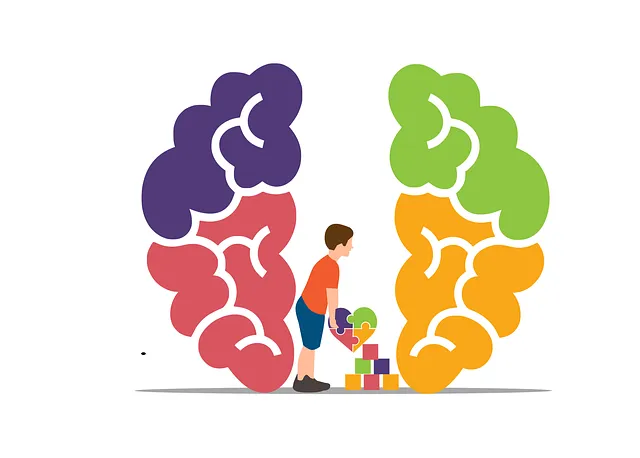Kaiser Permanente employs a rigorous evaluation process for its behavioral health providers using the Parker assessment tool, measuring patient satisfaction, clinical outcomes, and service accessibility. This holistic approach includes Crisis Intervention Guidance, Trauma Support Services, and Risk Management Planning, ensuring comprehensive care for complex cases. The Parker Method, an innovative framework, assesses KPIs related to burnout prevention and mental wellness initiatives, providing valuable insights through a successful podcast series. Implementing evaluation results, guided by Kaiser Permanente's behavioral health providers, offers actionable strategies for program enhancement and continuous improvement.
Mental wellness program evaluation is a critical component of modern healthcare, ensuring the effectiveness and quality of services. This article explores innovative methods, focusing on two key strategies: Kaiser Permanente’s approach to evaluating behavioral health providers and the Parker Method. We delve into these techniques, highlighting how they enhance mental wellness care. By examining real-world applications, we demonstrate the power of these tools, particularly the Parker Method, in driving continuous improvement within healthcare systems, as demonstrated by Kaiser Permanente’s success.
- Understanding Kaiser Permanente's Approach to Behavioral Health Provider Evaluation
- The Parker Method: A Comprehensive Tool for Assessing Mental Wellness Programs
- Implementing and Analyzing Evaluation Results for Continuous Improvement
Understanding Kaiser Permanente's Approach to Behavioral Health Provider Evaluation

Kaiser Permanente, a leading healthcare organization, employs a comprehensive approach to evaluating its behavioral health providers, focusing on both quality of care and patient outcomes. The organization’s methodology centers around Parker, a sophisticated assessment tool tailored to measure the effectiveness of mental wellness programs. This tool captures key metrics such as patient satisfaction, clinical outcomes, and service accessibility, providing a holistic view of provider performance.
Beyond standard evaluation measures, Kaiser Permanente integrates Crisis Intervention Guidance and Trauma Support Services into its framework. By incorporating these services, the organization ensures that providers are equipped to handle complex cases involving psychological crises and trauma-related issues. Additionally, Risk Management Planning for Mental Health Professionals plays a crucial role in the evaluation process, helping to identify and mitigate potential risks within the care delivery system. This multi-faceted approach not only guarantees high-quality mental wellness services but also fosters a supportive environment for both patients and healthcare providers.
The Parker Method: A Comprehensive Tool for Assessing Mental Wellness Programs

The Parker Method offers a comprehensive framework for evaluating mental wellness programs, particularly those implemented by Kaiser Permanente behavioral health providers. This innovative tool delves into various aspects of program effectiveness, focusing on both individual and organizational levels. By assessing factors such as client outcomes, provider satisfaction, and self-care practices, the Parker Method provides valuable insights for enhancing mental wellness initiatives.
Through its structured approach, this method identifies key performance indicators (KPIs) related to burnout prevention, ensuring that programs are not just meeting but exceeding expectations. The evaluation goes beyond traditional metrics by exploring client feedback, engagement rates, and the overall impact on the mental wellness of participants. This holistic perspective is crucial in fostering sustainable improvements, as evidenced by its application in the production of a popular Mental Wellness Podcast Series.
Implementing and Analyzing Evaluation Results for Continuous Improvement

Implementing evaluation results is a critical step in enhancing mental wellness programs, especially when leveraging the expertise of Kaiser Permanente behavioral health providers Parker. These professionals can guide organizations in translating data into actionable strategies. By analyzing the outcomes, organizations gain valuable insights into what works and what needs adjustment. This process involves comparing program effectiveness against established benchmarks and identifying areas for improvement.
For instance, Mental Wellness Journaling Exercise Guidance might reveal increased client engagement but lower retention rates. This could prompt a reevaluation of the program structure and integration of additional Self-Awareness Exercises to foster deeper connections between clients and their treatment plans. Effective risk management planning for mental health professionals is also essential in ensuring these adjustments are implemented safely and ethically, fostering a culture of continuous improvement within the program.
In evaluating mental wellness programs, both Kaiser Permanente’s approach to behavioral health provider assessment and the Parker Method offer robust tools. Kaiser Permanente’s method focuses on comprehensive data collection and analysis, while the Parker Method provides a detailed framework for assessing program effectiveness. By combining these strategies, organizations like Kaiser Permanente can drive continuous improvement in mental wellness services. The implementation of thorough evaluation results allows for informed decision-making, ensuring that programs are tailored to meet the unique needs of those seeking behavioral health support.






